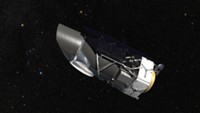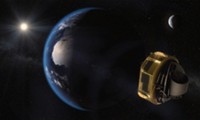Advertisement
Grab your lab coat. Let's get started
Welcome!
Welcome!
Create an account below to get 6 C&EN articles per month, receive newsletters and more - all free.
It seems this is your first time logging in online. Please enter the following information to continue.
As an ACS member you automatically get access to this site. All we need is few more details to create your reading experience.
Not you? Sign in with a different account.
Not you? Sign in with a different account.
ERROR 1
ERROR 1
ERROR 2
ERROR 2
ERROR 2
ERROR 2
ERROR 2
Password and Confirm password must match.
If you have an ACS member number, please enter it here so we can link this account to your membership. (optional)
ERROR 2
ACS values your privacy. By submitting your information, you are gaining access to C&EN and subscribing to our weekly newsletter. We use the information you provide to make your reading experience better, and we will never sell your data to third party members.
Environment
U.S. satellite studies of Earth’s atmospheric chemistry proposed for next decade
by Sam Lemonick
January 15, 2018
| A version of this story appeared in
Volume 96, Issue 3

For the next 10 years of spacecraft-based studies of Earth, the U.S. National Academies of Sciences, Engineering & Medicine recommend several areas of atmospheric chemistry for further study. In particular, the National Academies’ Committee on the Decadal Survey for Earth Science & Applications from Space advocates continuing two missions that are already in the works to study the properties and distribution of atmospheric aerosol particles. It also suggests spending up to $350 million each on missions that could incorporate instrumentation to study the fluxes and sources of greenhouse gases as well as profiles of ozone and other trace gases. Those recommendations and others in the report are predicated on a projected $3.4 billion budget for Earth observation over the next decade. The committee noted that NASA opted to cancel several Earth-observing missions in the past 10 years because of funding constraints. Consequently, the U.S. is already relying heavily on the European Space Agency (ESA) to fill those gaps. The National Academies’ committee recommends NASA open discussions with ESA and other international partners to ensure critical measurements are being made. The strategy report was commissioned by NASA, the National Oceanic & Atmospheric Administration, and the U.S. Geological Survey.





Join the conversation
Contact the reporter
Submit a Letter to the Editor for publication
Engage with us on Twitter